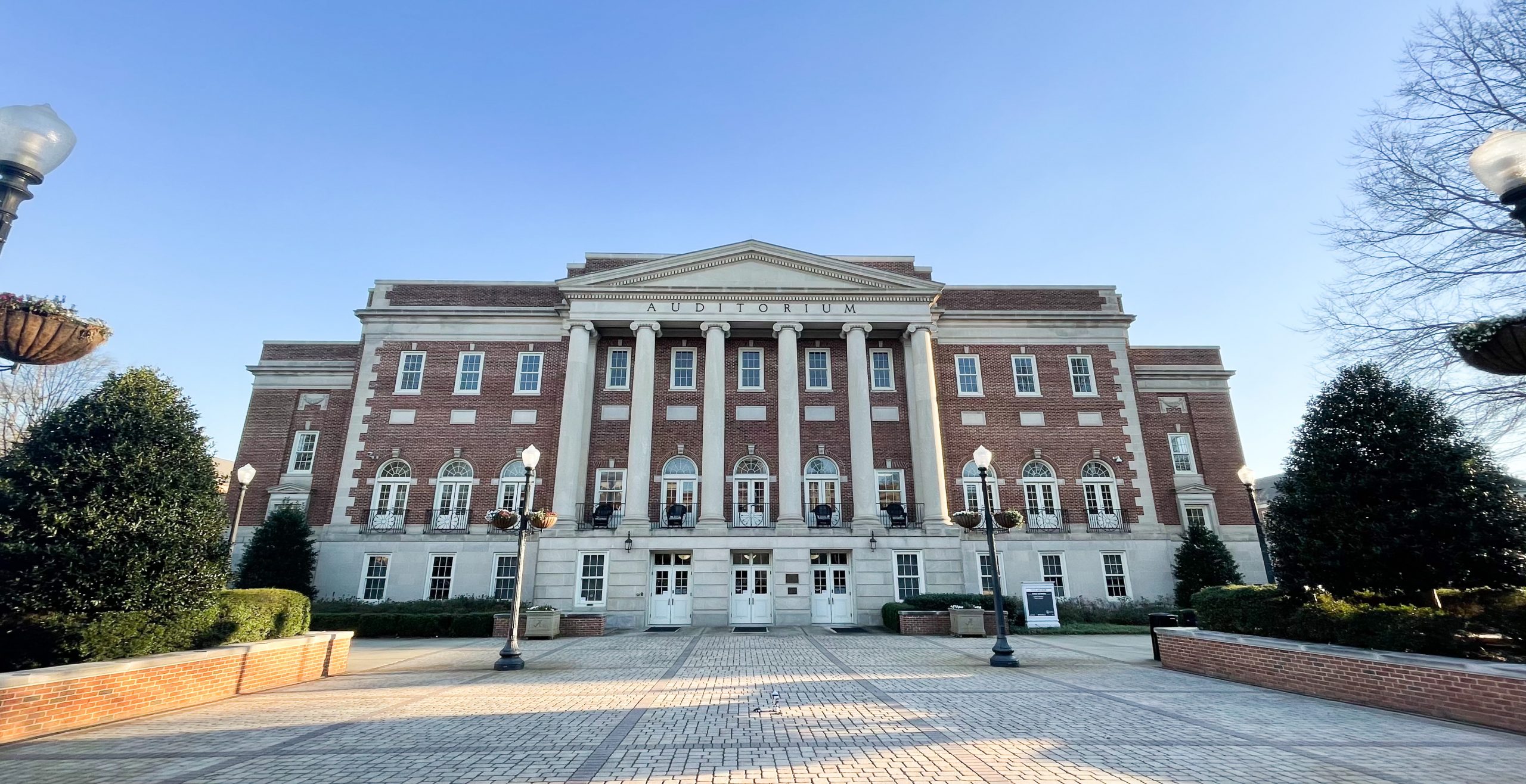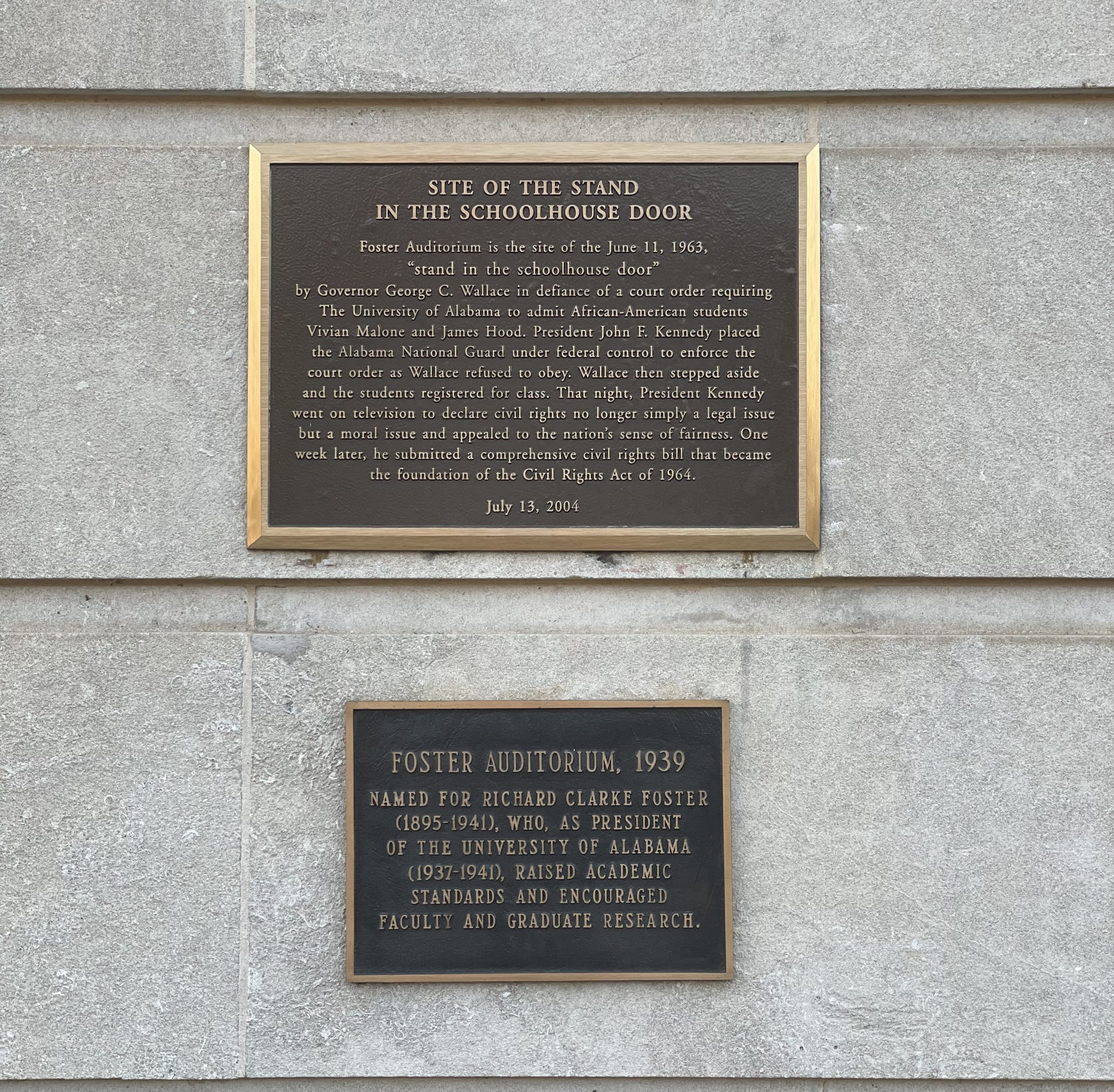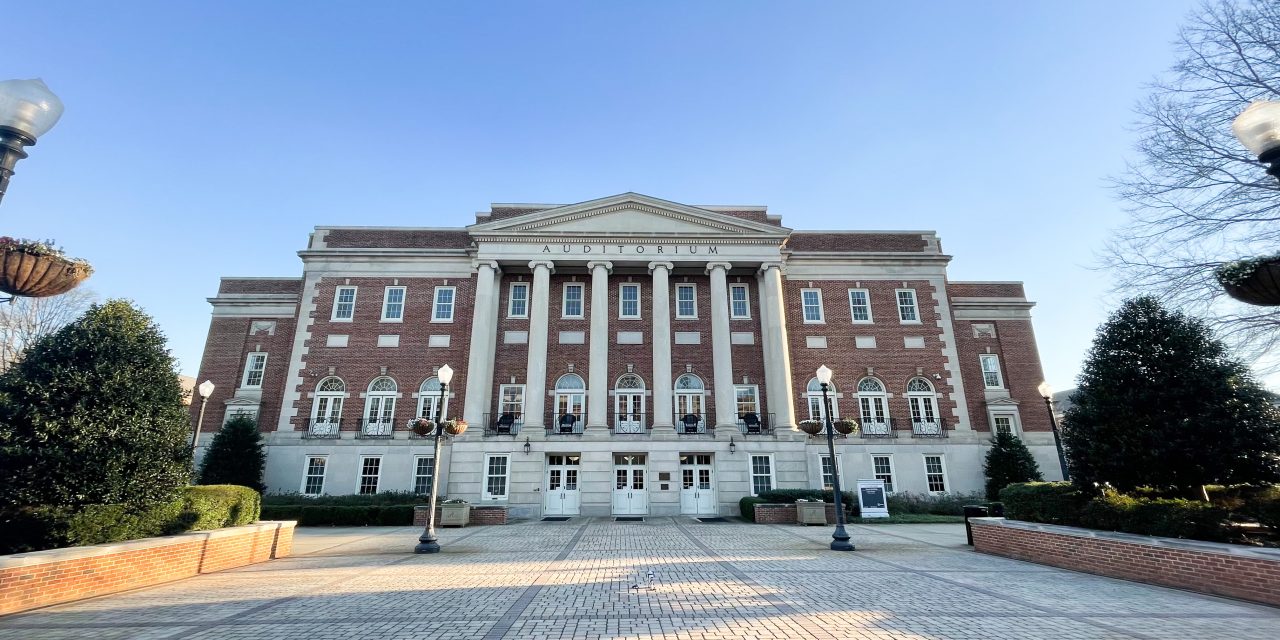If Doors Could Talk
At his inauguration in 1963, George Wallace proclaimed, “Segregation now, segregation tomorrow segregation forever.” Five months later, the Alabama governor followed through with his declaration when he blocked the first two African Americans, Vivian Malone and James Hood, from enrolling at The University of Alabama (UA). The event, which caused President John F. Kennedy to call in the National Guard, brought national attention and landed a spot in American history as the Stand at the Schoolhouse Door.
Fifty-eight years later, the doors of Foster Auditorium still stand. Constructed in 2010, the auditorium entrance, now named the Malone Hood Plaza, contains a 40-foot tower with markers honoring the two African American students for their courageous actions.
Hilary Green, an associate professor of history and the African American studies program’s co-program director at The University of Alabama, praised the plaza’s construction in 2010.
“It’s an acknowledgment of another part of U.S. history that could have been swept away and not engaged,” she said.“That marker and monument in the plaza also matter that they started to heal the trauma that was caused to the people who were featured on it before they died, especially James Hood.”
Green said the plaza was the beginning of a relationship change between the University and the African American community and an opportunity for more to be done.

Foster Auditorium formerly known as the George Wallace Building located at The University of Alabama in Tuscaloosa, AL.
Over the years, the University has taken accountability and acknowledged its history, including renaming buildings with problematic and racist pasts; however, there is still a great deal of work to be done.
Foster Auditorium and Malone Hood Plaza are not mentioned in the official University of Alabama Undergraduate Admissions Tour. The tour travels down Sixth Street and passes the auditorium, a profound, historical and crucial stop for the University to mention to potential students.
Green was surprised that there was no discussion or narrative on the topic in the tours she had taken. However, in the past three years, UA’s Capstone Men and Women (CMW), the university’s official ambassadors, have worked to incorporate Malone Hood Plaza into the tour script.
Royce Dickerson, CMW’s 2020-21 president, worked with his executive members to include accurate information about the auditorium’s history, the stand-in at the schoolhouse doors, and Vivian Malone and James Hood. The tour also brings up current events associated with the schoolhouse doors such as Lucy Foster, the first official African American to attend UA, receiving her honorary doctorate in 2019.
“There wasn’t much discussion beyond just getting everything approved with our advisors. As long as we knew the information is correct, there’s no kind of chain it had to go up, especially if it’s something that we all feel is very important to mention and highlight,” Dickerson said.
The official tour spends five to ten minutes at the Plaza “walking around and reading the plaques” that adhere the clock tower. Yet, Green said there’s more to do than just put up a marker and build a monument; the University and its administration must work to change the culture, and that starts with its people.
“We have to change the community that people notice history coming in, find their role in it, and slowly change the narratives,” she said. “If we truly want diversity, equity and inclusion, it requires work from everyone.”

The plaque located on the front of Foster Auditorium formerly known as the George Wallace Building located at The University of Alabama in Tuscaloosa, AL.
Many students have used their voices to bring attention to the issues they face on campus, including Demarcus Joiner, UA’s Student Government Association’s (SGA) president, whose focused efforts educate the student body.
Joiner established a diversity, equity and inclusion (DEI) certification program during his term as the first elected vice president of DEI. To receive certification, the certification program requires organizations to participate in a series of DEI events such as educational speakers, workshops and round table talks throughout the year.
Joiner believes students should be pushed to understand the importance of DEI and what it means to be actively anti-racist. The events challenged students to think differently and open their minds to others’ experiences and perspectives.
“They hear the words diversity and inclusion but never really truly understand what they mean,” Joiner said. “So that was, I guess our goal as far as SGA last year was to make sure students understood what it was.”.
While many of UA’s recent advancements in DEI have come from students vocalizing concerns to university administration, pressure remains on the University to address and acknowledge its past.
Green encouraged the University to push beyond its current narrative and transition to one that embraces the University’s complicated racial past from slavery, to Jim Crow segregation, to the schoolhouse doors, all parts of UA’s foundational aspects that built UA’s historic and often controversial past.
“If we’re not going to talk about our success, and that’s desegregation, and the stand at the schoolhouse door, which is a success story, in a way, even though there are some downsides, what happened to real history,” Green said. “If we can’t talk about that, how are we going to talk about the history on our campus.”
She said it’s the responsibility of everyone to become educated and sell the University in a way that acknowledges its past and highlights its positive changes.
Dickerson discusses the university’s DEI programs and answers the tough questions potential students and their families have on tours to emphasize, “how are we championing that diversity, how are we making those who necessarily don’t see that diversity experienced it in all of our communities.”
Green said she does see the change happening around her. She sees it in the students taking additional history electives and demanding the renaming of campus buildings. She sees it in the administration, actively diversifying their departments and changing the University’s narrative.
The university recently removed a stone confederate monument at the center of the Quad and renamed several campus building names, both initiatives led by UA students. Joiner credits the recent changes on campus and throughout the country to the protests and marches following the death of George Floyd during the summer of 2020.
“There’s always a push that has to happen for a change to occur, and I think that was the push,” Joiner said. “I just hope that it doesn’t stop there.”
Joiner said he sees the campus as one of the Southeastern Conference (SEC)’s leading universities in terms of diversity, equity and inclusion, and he’s proud of the steps the University has taken to make the campus and administration more diverse.
The steps the University has taken are just the beginning of a long road ahead. The SGA president said fighting complacency would be the biggest challenge moving forward and that he is grateful to James and Lucy for taking those first steps.
Gov. Wallace blocking Malon and Hood from enrolling at The University of Alabama’s campus less than 60 years remain a constant reminder of the campus’s racist past and a marker of encouragement for the advancements the university has made since then. Past and present student leaders have been at the forefront of advocating change and will be instrumental in the continuous improvements.
“I guess the first is that it wasn’t that long ago. And as hard as people try to make it seem like it was ancient history is not,” Joiner said. “But then I also feel, I guess, grateful for James and Lucy for being a foreigner in this and making sure that I can walk past those doors without someone you know, telling me I can’t even go in the building.”






